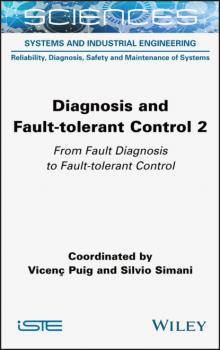ТОП просматриваемых книг сайта:
Группа авторов
Список книг автора Группа авторовАннотация
Natural history collections have recently acquired an unprecedented place of importance in scientific research. Originally created in the context of systematics and taxonomy, they are now proving to be fundamental for answering various scientific and societal questions that are as significant as they are current.<br /><br /><i>Natural History Collections in the Science of the 21st Century</i> presents a wide range of questions and answers raised by the study of collections. The billions of specimens that have been collected from all around the world over more than two centuries provide us with information that is vital in our quest for knowledge about the Earth, the universe, the diversity of life and the history of humankind.<br /><br />These collections also provide valuable reference points from the past to help us understand the nature and dynamics of global change today. Their physical permanence is the best guarantee we have of a return to data and to information sources in the context of open science.
Аннотация
This book presents recent advances in fault diagnosis and fault-tolerant control of dynamic processes. Its impetus derives from the need for an overview of the challenges of the fault diagnosis technique and sustainable control, especially for those demanding systems that require reliability, availability, maintainability, and safety to ensure efficient operations. Moreover, the need for a high degree of tolerance with respect to possible faults represents a further key point, primarily for complex systems, as modeling and control are inherently challenging, and maintenance is both expensive and safety-critical.<br /><br /><i>Diagnosis and Fault-tolerant Control 2</i> also presents and compares different fault diagnosis and fault-tolerant schemes, using well established, innovative strategies for modeling the behavior of the dynamic process under investigation. An updated treatise of diagnosis and fault-tolerant control is addressed with the use of essential and advanced methods including signal-based, model-based and data-driven techniques. Another key feature is the application of these methods for dealing with robustness and reliability.
Аннотация
We live in a world of major disruption, where the individual and the collective stand in opposition against the backdrop of globalization, digital revolution, community development, growing concerns around health and the planet, and now an unprecedented global health crisis.<br /><br />This book explores how these phenomena influence the social ties that surround food and the way we eat together. Extensive research is presented on institutional recommendations concerning eating together, the role of online communities in supporting weight loss, the perceived consequences of diets, the social phenomena involved in vegetarianism, market segmentation in the case of ritual and religious practices, and the rising tendency to «buy local» and to value local identity. As the Covid-19 crisis adds to the complexity of these issues, its impact is also taken into account.<br /><br />For both interested readers and the many players involved in the agri-food industry, these reflections shed light on the current developments in «eating together».
Аннотация
Change Detection and Image Time Series Analysis 2 presents supervised machine-learning-based methods for temporal evolution analysis by using image time series associated with Earth observation data. Chapter 1 addresses the fusion of multisensor, multiresolution and multitemporal data. It proposes two supervised solutions that are based on a Markov random field: the first relies on a quad-tree and the second is specifically designed to deal with multimission, multifrequency and multiresolution time series.Chapter 2 provides an overview of pixel based methods for time series classification, from the earliest shallow learning methods to the most recent deep-learning-based approaches.Chapter 3 focuses on very high spatial resolution data time series and on the use of semantic information for modeling spatio-temporal evolution patterns.Chapter 4 centers on the challenges of dense time series analysis, including pre processing aspects and a taxonomy of existing methodologies. Finally, since the evaluation of a learning system can be subject to multiple considerations,Chapters 5 and 6 offer extensive evaluations of the methodologies and learning frameworks used to produce change maps, in the context of multiclass and/or multilabel change classification issues.










